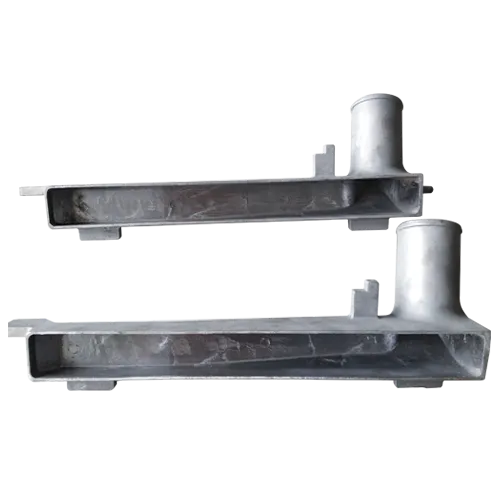Mobile:+86-311-808-126-83
Email:info@ydcastings.com
Innovative Techniques in Aluminum Die Casting for Enhanced Manufacturing Efficiency
Aluminum Casting Die An Essential Component in Manufacturing
Aluminum casting is a widely used manufacturing process that transforms molten aluminum into various shapes and products. One critical element of this process is the aluminum casting die, which plays a vital role in determining the quality, precision, and efficiency of the final products. This article delves into the significance of aluminum casting dies, their types, manufacturing process, and the factors to consider when selecting a die for specific applications.
Understanding Aluminum Casting
Aluminum casting involves pouring molten aluminum into a mold, allowing it to solidify and form a desired shape. Due to its lightweight, excellent corrosion resistance, and good thermal conductivity, aluminum is favored in numerous industries, including automotive, aerospace, and consumer goods. The casting process can be performed using various methods, such as sand casting, investment casting, and die casting, each having its unique applications and advantages.
The Role of Aluminum Casting Dies
Aluminum casting dies are specialized molds used in the die casting process, where molten aluminum is injected into a precisely engineered cavity. These dies are crucial in producing high-volume, high-precision aluminum parts. The primary functions of an aluminum casting die include
1. Defining the Shape The die is responsible for forming the precise geometry of the final product, ensuring that it meets design specifications.
2. Ensuring Surface Finish The interior surface of the die significantly affects the finishing quality of the cast product. A well-manufactured die ensures a smooth surface finish, reducing the need for additional machining.
3. Facilitating Heat Transfer Aluminum casting dies must effectively dissipate heat to solidify the molten aluminum quickly. Efficient heat transfer is essential to maintain the integrity of the casting.
4. Increasing Production Efficiency A well-designed die can withstand high pressures and repeated use, enabling manufacturers to produce large quantities of components with minimal downtime.
Types of Aluminum Casting Dies
Aluminum casting dies can be categorized into two primary types
aluminum casting die

1. Cold Chamber Dies In this system, molten aluminum is poured into a separate chamber, and a plunger injects it into the die cavity. Cold chamber dies are typically used for high melting point metals, providing better control over the injection process.
2. Hot Chamber Dies Here, the die is mechanically connected to a furnace that keeps the aluminum molten. This method allows for quicker cycle times and is typically used for low melting point alloys. However, it may limit the type of metals used.
Each type of die has its advantages and is selected based on the specific requirements of the casting project.
Factors to Consider When Choosing an Aluminum Casting Die
When selecting an aluminum casting die, several critical factors must be taken into account
1. Material Selection The die material should have high wear resistance and thermal conductivity to withstand the intense conditions of the casting process. Common materials used include steel and aluminum alloys.
2. Design Specifications The die design must precisely match the desired product specifications, including tolerances and surface finish requirements.
3. Cooling System An efficient cooling system integrated into the die can enhance production speed and ensure consistent product quality.
4. Cost-Effectiveness While high-quality dies may involve a higher initial investment, their durability and efficiency can lead to lower operational costs in the long run.
5. Production Volume For high-volume production runs, investing in more advanced die technologies can yield significant benefits in terms of efficiency and part integrity.
Conclusion
Aluminum casting dies are an integral part of the aluminum casting process, impacting the quality and cost-effectiveness of the final products. Understanding the different types of dies, their design considerations, and their role in the casting process is vital for manufacturers aiming to achieve optimal results. As the demand for aluminum components continues to grow across various industries, advancements in casting die technology will likely pave the way for even more efficient and sustainable manufacturing practices. Investing in high-quality aluminum casting dies is not just a smart choice—it's a necessary step toward competitive excellence in today’s manufacturing landscape.
-
Understanding Metal Casting TechniquesNewsApr.02,2025
-
Understanding Exhaust Manifolds for Enhanced Engine PerformanceNewsApr.02,2025
-
The World of Metal FabricationNewsApr.02,2025
-
Key Components for Pump and Turbo EfficiencyNewsApr.02,2025
-
Essential Tools for Automotive Maintenance and RepairNewsApr.02,2025
-
Durable Valve Components for Effective Water ManagementNewsApr.02,2025











